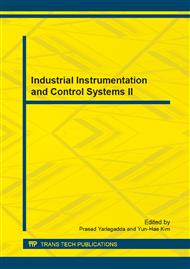[1]
Ni Jae Sik Lee, Jin Chun Lee. Customer Churn Prediction by Hybrid Model[J]. Lecture Notes In Computer Science, 2006: 959-966.
DOI: 10.1007/11811305_104
Google Scholar
[2]
Prinzie and Van den Poel, 2008A. Prinzie,D. Van den Poel. Random forests for multiclass classification: Random multinomial logit. Expert Systems with Applications, 34 (2008), p.1721–1732.
DOI: 10.1016/j.eswa.2007.01.029
Google Scholar
[3]
Lee, Jae Sik; Lee, Jin Chun. Customer churn prediction by hybrid model[J]. Lecture Notes in Computer Seience, 2006, 4093, 959-966.
DOI: 10.1007/11811305_104
Google Scholar
[4]
B. -H. Chu et al., Toward a hybrid data mining model for customer retention[J]. Knowl. Based Systems. (2006), 10, 1-6.
Google Scholar
[5]
Burez and Van den Poel, 2007J. Burez, D. Van den Poel. CRM at a pay-TV company: Using analytical models to reduce customer attrition by targeted marketing for subscription services. Expert Systems with Applications, 32 (2) (2007), p.277–288.
DOI: 10.1016/j.eswa.2005.11.037
Google Scholar
[6]
Martens et al., 2011D. Martens,J. Vanthienen,W. Verbeke,B. Baesens. Performance of classification models from a user perspective. Decision Support Systems, 51 (2011), p.782–793.
DOI: 10.1016/j.dss.2011.01.013
Google Scholar
[7]
Lima et al., 2009E. Lima, C. Mues, B. Baesens. Domain knowledge integration in data mining using decision tables: Case studies in churn prediction. Journal of the Operational Research Society, 60 (8) (2009), p.1096–1106.
DOI: 10.1057/jors.2008.161
Google Scholar
[8]
Glady et al., 2009N. Glady, B. Baesens, C. Croux. A modified pareto/NBD approach for predicting customer lifetime value. Expert Systems with Applications, 36 (2) (2009), p.2062–(2071).
DOI: 10.1016/j.eswa.2007.12.049
Google Scholar


